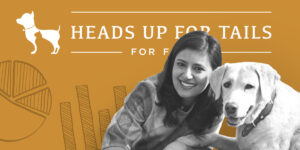While the pandemic has disrupted businesses across sectors, some including edtech, video and music streaming have witnessed a sharp rise in their usage and engagement. With the increased consumption, streaming companies are expected to perform better in financial terms in the last fiscal (FY21) as well as ongoing one (FY22).
However, that doesn’t seem to be the case with Tencent-backed music streaming platform Gaana. As per its FY21 unaudited figures filed with the Ministry of Corporate Affairs, its operating revenue barrel grew by a mere 2.65% to Rs 123 crore in the fiscal ended in March 2021 from Rs 120 crore in FY20.

Gaana’s revenue from operations comprises advertisement revenue, subscription revenue, jukebox revenue and revenue from playout of streams on other platforms. While the company is pushing customer acquisition by spending more on online advertisement, its subscription revenue growth is driven by bundled subscriptions jointly offered by Paytm First Games, Micromax, Flipkart and Times Prime.
When it comes to expenses, we discovered that Gaana’s direct cost comprises music streaming, content, direct advertising sales and direct marketing cost for customer acquisition through digital channels. This direct cost of services has grown by 11.4% from Rs 173.02 crore in FY20 to Rs 193 crore in FY21.
Significantly, expenditures incurred on employee benefits have dropped by 34% to Rs 51.2 crore in FY21 from Rs 77.6 crore in FY20 as the company looks forward to reducing its operation costs and moving towards a sustainable business model.
Gaana’s other indirect cost comprises above the line marketing expenses and outsourced services cost including other general and administrative expenses. These costs also reduced by nearly 17% to Rs 212 crore in FY21 from Rs 255 crore in FY20.
The company was funded by equity capital infusion from investors up until FY21, during which it raised Rs 375 crore via allotment of debentures. As a result, the finance costs grew to Rs 3.3 crore in FY21 from zero in FY20.
Gaana booked another Rs 6.1 crore as depreciation, pushing the total costs incurred by the company to Rs 456.8 crore in FY21 dropping by 9.7% from Rs 506 crore spent in total during FY20.
Gaana spent Rs 3.71 to earn a single rupee of revenue in FY21, dropping from Rs 4.22 spent to earn the same during FY20.
Due to the reduced costs, Gaana has managed to reduce its annual losses from Rs 352 crore in FY20 to Rs 327 crore in FY21.
Times Internet-backed music streaming company has recently raised $40 million from existing investor Tencent. According to Fintrackr, Gaana was valued at around $570-$580 million in the round, which seems to be an ongoing one.
While Gaana’s revenue didn’t witness any significant growth in FY21, it has managed to cut costs, which is a good sign. It recently claimed to turn profitable by 2023. However, it won’t be an easy task as the company losses are more than 2X that of its revenue.
Queries sent to Gaana did not elicit an immediate response. We’ll update the post in case they do.
Gaana is also aiming to reach a 500 million subscriber base in the next two years from the current 185 million. Again, it would be a tough task as the competition in the music streaming segment has heightened with Jio Saavn, Spotify, Hungama, Wynk and Gaana have been locked in an intense battle to acquire more users and their screen-time.














